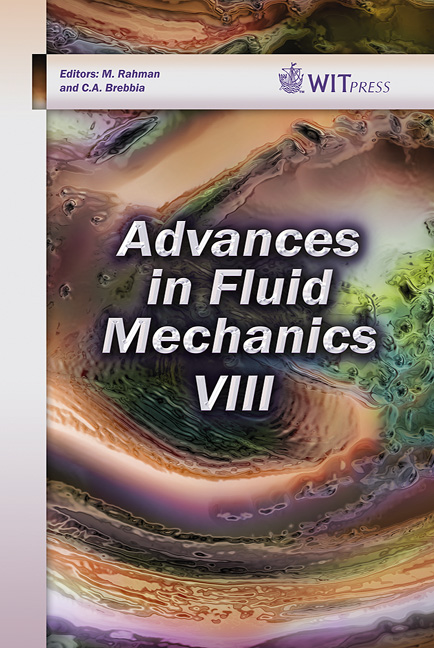Turbulence Modeling With The Boundary Element Method
Price
Free (open access)
Transaction
Volume
69
Pages
11
Page Range
3 - 13
Published
2010
Size
952 kb
Paper DOI
10.2495/AFM100011
Copyright
WIT Press
Author(s)
J. Lupše, L. Škerget & J. Ravnik
Abstract
In the present article we were testing our flow solver for turbulent channel flow. Velocity-vorticity formulation of Navier-Stokes equations is applied, thus governing equations are given for the kinematic and kinetic aspects of flow instead of mass and momentum equations. The solution algorithm first solves the kinematics equation for unknown boundary vorticity values using the single domain boundary element numerical method. The next step of the solution algorithm is calculation of the domain velocity field, which is also achieved by solving the kinematics equation. In this and later cases we use the sub-domain boundary element method. After the velocity field is known, we calculate the turbulent kinetic energy and turbulent dissipation fields to obtain the turbulent viscosity. Finally, the vorticity field redistribution is calculated via the kinetics equation. For laminar solutions it was shown that the use of the boundary domain integral method accuracy of solutions for benchmark test cases is very high on coarse meshes. However, since this method is still limited, with high CPU and memory requirements, parallelization of the algorithm is a must for calculating turbulent flows. This was achieved with the use of a MPI (message passing interface) standard. 1 Introduction In this paper we present the application of the boundary element method for solving planar turbulent flow problems with low-Reynolds-number turbulence models. Since viscosity now includes an additional, modeled part, governing equations have to be written in extended forms, which have to include this nonlinear behavior. The compressibility effect was neglected for simplifying an already highly nonlinear set of equations. For the same reason a zero gravity
Keywords





